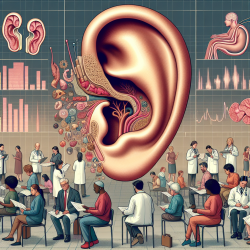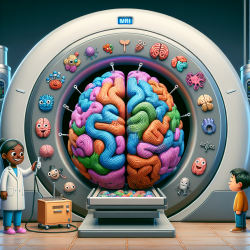Introduction
Speech intelligibility challenges in individuals with Trisomy 21 (T21), commonly known as Down syndrome, are well-documented. However, interventions for co-morbid conditions like childhood apraxia of speech (CAS) remain underexplored. A recent study titled "Enhancing Speech Rehabilitation in a Young Adult with Trisomy 21: Integrating Transcranial Direct Current Stimulation (tDCS) with Rapid Syllable Transition Training for Apraxia of Speech" offers promising insights into innovative treatment approaches.
Understanding the Study
The study utilized an N-of-1 randomized trial to examine the effects of combining tDCS with a motor learning task, specifically Rapid Syllable Transition Training (ReST), in a 20-year-old male with T21 and moderate-severe CAS. The results were compelling, showing a 40% improvement in speech sound production accuracy under tDCS compared to less than 20% in sham-tDCS and control sessions.
Key Findings
- tDCS and ReST Synergy: The combination of tDCS over Broca’s area and ReST significantly improved speech sound accuracy and consistency.
- Brain Activation: Enhanced activation in Wernicke’s area, supramarginal gyrus, and Sylvian temporal-parietal junction was correlated with improved speech accuracy.
- Transfer Effects: The intervention reduced speech severity from moderate-severe to mild-moderate, indicating potential for broader application.
Implications for Practitioners
For speech-language pathologists, these findings highlight the potential of integrating tDCS with established motor learning techniques like ReST to enhance therapy outcomes for individuals with T21 and CAS. The study suggests that targeting specific brain regions can facilitate speech sound acquisition, potentially through activating areas involved in phonological working memory.
Encouraging Further Research
While the study provides valuable insights, it also underscores the need for further research to validate these findings across larger populations. Practitioners are encouraged to explore the integration of non-invasive brain stimulation techniques in their therapeutic approaches and contribute to the growing body of evidence supporting these interventions.
Conclusion
The integration of tDCS and ReST offers a promising avenue for improving speech rehabilitation outcomes in individuals with T21 and CAS. As we continue to explore the connections between brain stimulation and speech therapy, we can enhance our understanding and treatment of speech motor disorders.
To read the original research paper, please follow this link: Enhancing Speech Rehabilitation in a Young Adult with Trisomy 21: Integrating Transcranial Direct Current Stimulation (tDCS) with Rapid Syllable Transition Training for Apraxia of Speech.










